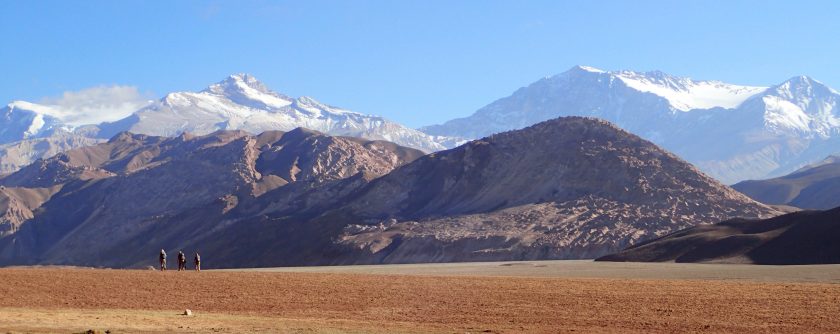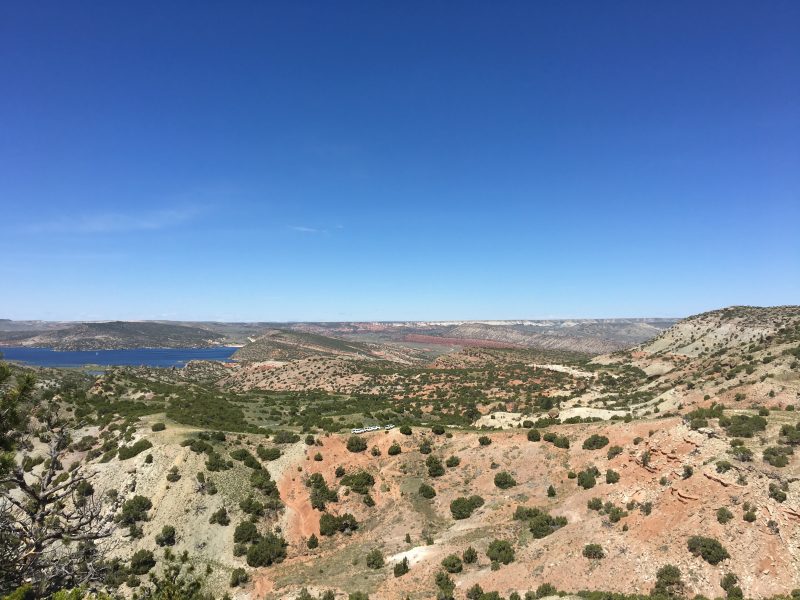Research Breaks Down Broken Foreland Basins
February 14, 2023

If you ask a geologist to define a broken foreland basin, you’re apt to get many different responses. But if you ask why these basins form, there’s usually one consensus answer – flat slab subduction.
A study led by The University of Texas at Austin is offering a different take. The researchers present a categorical definition for broken foreland basins and suggest that an array of geological mechanisms, not just flab slab subduction, could lead to their formation.
“Many geologists have used broken foreland basins as a definitive marker for a very specific tectonic situation that involves flat slab subduction,” said lead author Brian Horton, a professor at the UT Jackson School of Geosciences. “We’re starting to recognize that there are multiple potential pathways.”
The study was published in Earth Science Reviews.
Foreland basins form adjacent to mountain belts, facing the interior of a continent, and fill up over time with eroded sediments deposited across the surrounding lowlands, sometimes over hundreds of kilometers. The basin systems can play a major role in shaping the landscape, both directly and indirectly – influencing climate, waterways, and sediment dispersal at the continental scale.
Foreland basins come in two varieties: continuous and broken, with the broken basins hosting deep faults that break up the basin and bring deep basement rock to the Earth’s surface. But deftly distinguishing between the two basin types in the geologic record has been a fuzzy matter for the geosciences community.
“Geoscientists have been using the term loosely and they mean different things,” Horton said.
The study seeks to remedy that by offering a detailed definition for a broken foreland basin that describes the basin topographic setting, crustal faults, and sedimentary response to the structural disruption of an otherwise continuous lowland plain. The work also includes a comparative analysis between broken foreland basins and continuous ones.
“It’s not just semantics,” Horton said. “This approach leads us somewhere new in considering what’s driving these systems and their structural and stratigraphic conditions, modern and ancient.”

Currently, flat slab subduction is the most commonly cited driver of broken foreland basins. There’s good reason for that. The world’s most studied broken foreland systems are part of the Andes and Rocky Mountains, which were both deeply affected by flat slab subduction, a type of subduction where an oceanic plate dives beneath a continental plate at a relatively shallow angle.
But there are flaws with this explanation. The basin locations in continental interiors means they’re relatively far away from the continental margins where subduction happens. What’s more, not all mountains built by flat slab subduction have broken foreland basins.
In their synthesis, the researchers caution against viewing flat slab subduction as an exclusive explanation for broken foreland basins, and argue that there’s more than one way to break a basin. They divide the potential drivers into two categories: inherited, pre-existing conditions that help promote breakage, and an array of potential triggers that stem from the mountain building process.
From deep pre-existing faults in basement rock below the basin, to increased geologic temperatures, to variable crustal weaking or strengthening during mountain building, there are numerous ways to potentially create a broken foreland basin, according to the researchers.
Arlo Weil, a professor at Bryn Mawr College who was not part of the investigation, said that the paper serves as a useful guide for systematically investigating the origins of broken foreland basins, and helps clarify the key geologic differences between them and their unbroken counterparts.
“The paper provides a powerful framework for potential hypothesis testing that future researchers can use to assess their own models of broken foreland basins,” he said.
The study was funded by the National Science Foundation.
The co-authors include Tomas Capaldi, an assistant professor at the University of Nevada, Las Vegas; Chelsea Mackaman-Lofland, an assistant professor at Denison University; Nicholas Perez, an associate professor at Texas A&M University; Meredith Bush, a high-school teacher in Seattle, Facundo Fuentes, a researcher with YPF Argentina; and Kurt Constenius, an adjunct faculty member at the University of Arizona.
Capaldi, Mackaman-Lofland, Perez, and Bush all earned their doctorates at the Jackson School.
For more information, contact: Anton Caputo, Jackson School of Geosciences, 210-602-2085; Monica Kortsha, Jackson School of Geosciences, 512-471-2241
